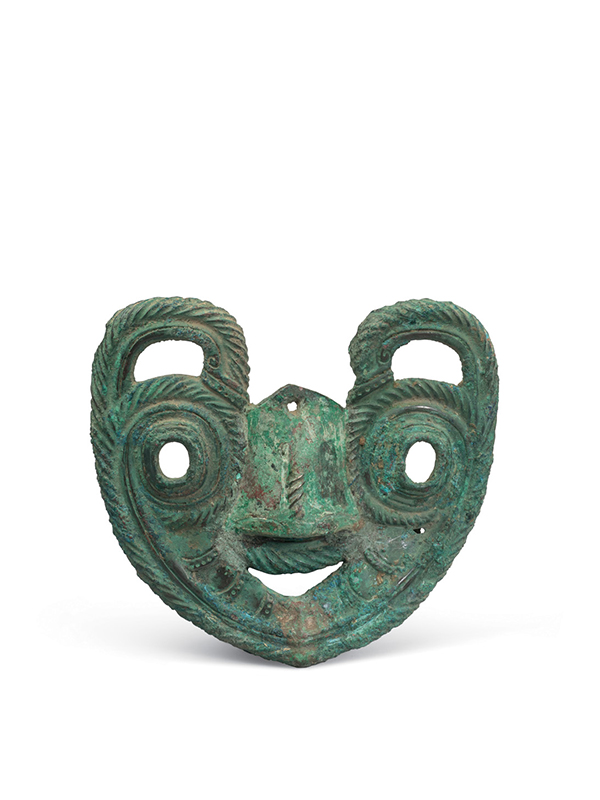Bronze bovine mask
A bronze mask depicting a bovine creature, with ‘twisted rope’ borders. The bovine has large round eyes with pierced pupils, a ridged nose, large U-shaped horns and a triangular pierced mouth. The top of the head has a domed cranial extension, which is pierced with a small hole for attachment. The back of the mask has four protruding loops attached. The bronze is mostly covered in a grey-green patina with small areas of malachite and ruby encrustation.
Bronze masks, popular from the early Shang to the mid-Western Zhou dynasties, come in various shapes and have different functions. At least four known functions have been revealed in recent archaeological studies, including adornments on shields; masks attached to the front of a horse’s head; harness plates on chariots; or decorations on ceremonial or ritual tools.[1] Chai illustrates two closely comparable bronze masks, both excavated in Shaanxi province and dated to the Western Zhou dynasty, here identified as adornments on shields.[2] The present example might have had the same function; the four loops attached to the back would have served to fasten it to a shield. Another bronze bovine mask of comparable style and function was excavated from Beijing in 1986.[3]
Provenance: ex Sze Yuan Tang collection, acquired in Hong Kong 1980s – 1990s; private collection, Asia
- Chai, X. M. ‘Lun Shang Zhou shi qi de qing tong mian shi (Discussion on bronze masks of the Shang and Zhou dynasties)’, Kaogu, 1992, vol. 12, pp. 111-21
- Chai, X. M. op. cit., pls. 3-1, 3-4, p. 1112
- Zhong Guo Qingtongqi Quanji (Complete Volume of Chinese Bronze Objects), vol. 6, Xi Zhou 2, Wen wu chu ban she, Beijing, 1995, pl. 27

